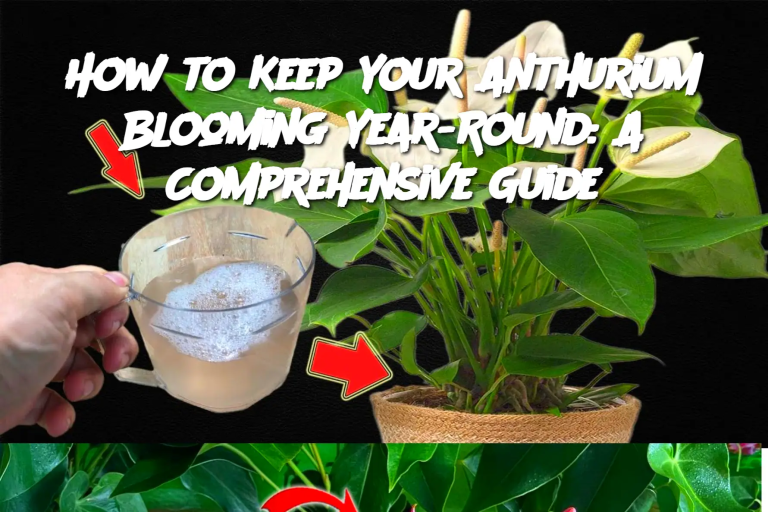ADVERTISEMENT
Introduction:
Anthuriums, also known as the "flamingo flower," are beloved for their vibrant, long-lasting blooms and glossy green foliage. While they are often seen as seasonal plants, with a bit of care, it is possible to encourage your anthurium to bloom all year round. In this guide, we'll explore the essential steps to maintaining a healthy anthurium that will thrive and produce beautiful flowers throughout the seasons.
Ingredients:
Quality Anthurium Plant – Healthy, pest-free, and robust.
Well-Draining Potting Mix – A mix designed for tropical plants.
Pot with Drainage Holes – Ensure good water drainage.
Fertilizer – Balanced, water-soluble fertilizer (preferably one designed for flowering plants).
Watering System – Either a regular watering can or self-watering system.
Humidity – Maintain 60% or higher humidity.
Grow Lights (Optional) – For low-light conditions or winter months.
Room Temperature – Between 65°F to 80°F (18°C to 27°C).
Instructions:
Choose the Right Pot and Soil: Start with a well-draining pot and soil mix. Anthuriums do best in soil that retains some moisture but doesn't stay soggy. A mix designed for orchids or a blend of peat moss, perlite, and pine bark is ideal.
Optimal Light Conditions: Place your anthurium in bright, indirect light. Direct sunlight can scorch the leaves, while too little light can stunt growth and flower production. If natural light is limited, consider using grow lights to supplement.
Watering Routine: Water your anthurium consistently, but be careful not to overwater. The soil should be kept slightly moist but never soggy. Allow the top inch of soil to dry out before watering again. Reduce watering during the winter months when the plant is dormant.
Maintain Humidity: Anthuriums thrive in humid environments. If the air in your home is dry, consider using a humidity tray, room humidifier, or misting the plant with water. Aim to keep the humidity at or above 60% to encourage consistent blooming.
Fertilize Regularly: Feed your anthurium every 4-6 weeks with a balanced, water-soluble fertilizer. Look for one high in potassium and phosphorus to promote flowering. During the growing season (spring and summer), fertilize more frequently.
Prune and Deadhead Flowers: Remove spent blooms and dead leaves regularly. This encourages the plant to focus its energy on new growth and flowers. Cut the flower stalks at the base when the blooms begin to fade.
Repotting: Repot your anthurium every 1-2 years to refresh the soil and give the roots more room to grow. This helps prevent root rot and allows the plant to continue thriving and blooming.
Serving and Storage Tips:
Ideal Placement: Anthuriums prefer warmth and humidity, so place them in bathrooms, kitchens, or living rooms with consistent warmth and indirect light.
Storing for Winter: During colder months, avoid placing your anthurium near drafts or windows with freezing temperatures. If using grow lights, ensure they are positioned to provide sufficient light for blooming.
Cutting Flowers: Anthuriums can be cut and placed in vases with water. Be sure to trim the stems at an angle to allow maximum water uptake.
Variations:
ADVERTISEMENT
